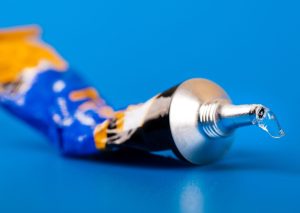 Introduction: The Three Princes of Serendip, where Serendip is the Classical Persian name for Sri Lanka, is a fairy tale in which the protagonists ‘were always making discoveries, by accidents and sagacity, of things they were not in quest of.’ Based on this, Horace Walpole coined the word serendipity in 1754 to mean inventions or discoveries made by accident. Science and technology offer many anecdotes of serendipitous discoveries and inventions. Here is the tenth such story in a series about serendipitous, patented inventions.
Introduction: The Three Princes of Serendip, where Serendip is the Classical Persian name for Sri Lanka, is a fairy tale in which the protagonists ‘were always making discoveries, by accidents and sagacity, of things they were not in quest of.’ Based on this, Horace Walpole coined the word serendipity in 1754 to mean inventions or discoveries made by accident. Science and technology offer many anecdotes of serendipitous discoveries and inventions. Here is the tenth such story in a series about serendipitous, patented inventions.
In 1942, during World War II, Dr Harry Wesley Coover Jr worked on acrylates for use in transparent plastic gun sights. By accident, he came across a highly sticky substance – a cyanoacrylate. He abandoned it because it stuck to everything it touched.
Cyanoacrylates are fast-curing cyanoacrylic esters that form strong adhesive bonds. They have the general chemical formula CH2=C(CN)CO2R, where R represents an organic molecular group, for example, the methyl (CH3) group.
Later, in 1951, a researcher called Fred Joyner worked with Dr. Coover at Eastman Kodak’s® laboratory in Tennessee. He was methodically testing hundreds of compounds, looking for a heat-resistant coating for canopies of flight decks of jet aircraft. Mr. Joyner took the 910th compound on his list and spread it between two lenses of a refractometer to measure the index of refraction of light through it. After the test, he discovered that he could not separate the lenses. They were stuck together. He panicked because of the loss of the expensive laboratory equipment. He had ruined the refractometer and, in those days, they cost around $3,000 – a huge sum of money!
Dr. Coover himself, however, saw an opportunity. After further research of about seven years, Super Glue’s first version was on the market, and it was called Eastman 910®. Mr. Joyner was not punished, in the spirit of science, for ruining the refractometer.
Dr. Coover once appeared on a television show called “I’ve Got a Secret.” His secret was the invention of Super Glue. To demonstrate its capabilities, a metal bar was lowered onto the stage. Dr. Coover attached another metal part to it using a small quantity of Super Glue. He then held on to the attached metal, and the metal bar was raised in the air. He still hung on because of the strong bond created by his invention. Then, the host of the show also jumped on and swung by it, demonstrating the strength of the bond – show biz style, on live television.
Kodak® patented this invention. However, for Kodak, it was not a commercial success. In 1980, it sold the business. Super Glue did not, surprisingly perhaps, make much money and did not become a commercial success until the patents expired. Other than making joining easy and strong, especially joints between disparate materials, Dr Coover realized its possible medical uses. It was used to close wounds to stop bleeding in the Vietnam War. Medical personnel carried Super Glue in spray form for the purpose.
Dr Coover was a product of Hobart College (bachelor’s degree) and Cornell University (master’s and PhD). He worked for Eastman Kodak Company until he retired and then worked as a consultant. In 2004, he was inducted into the National Inventors Hall of Fame and awarded the National Medal of Technology and Innovation.
Dr. Coover held 460 patents by the end of his life, although he is known mainly for his most famous invention, Super Glue.
Author: JL Anil Kumar
First Published by: Lexology here



